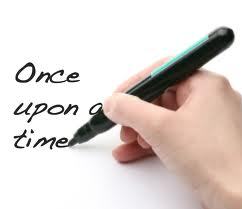Jane Austen, Edtech, and the Promise of ‘Theatrics’
 Thursday, May 16, 2013 at 5:08 PM by
Thursday, May 16, 2013 at 5:08 PM by  Nick DeMartino
Nick DeMartino The School Library Journal published Part 2 of an interview with me today in conjunction with the launch this week of "Welcome to Sanditon" on my client Theatrics.com's collaborative storytelling platform. Here is the text.
MAY 16, 2013 BY
Following is a continuation of my talk with Nick DeMartino, Head of Business Development for Theatrics.com. This week’s first episode bow of Welcome to Sanditon, based on the unfinished novel by Jane Austen and featuring a robust fan participation platform provided byTheatrics, prompted our chat–which soon turned to school-based applications of the technology.
What’s a specific curricular example of what could be done with Theatrics…?
A literature teacher could assign a team to create a transmedia adaptation of a story–like theLizzie Bennet team did–and involve the entire class, grade, or even across distances with other students using Theatrics’ cloud-based platform. The “Calls to Action” and the responses from the participants can vary wildly–why not assign alternative endings? What would happen if Tom Robinson had been acquitted in To Kill a Mockingbird? How would Holden Caulfield have changed if he moved to a new school in Ohio instead of New York City? You get the idea.
Teachers in other subject areas can use the platform to create innovative learning experiences as well by developing their own assignments using documentary-style video production as well as fictional characters, which opens up subjects as varied as history and social studies, health education, ethnic studies–even math and science.
 To play devil’s advocate for a moment, should librarians and teachers be cautious in terms of their expectations for student engagement? That is, if they look to the success of Theatrics in relation to Sanditon, should they bear in mind that the audience that’s creating new characters and videos are alreadyfans of the central text? In contrast, in a class of secondary students I doubt that most of them would self-identify as “fans” of the literary text being used or the historical event being covered…
To play devil’s advocate for a moment, should librarians and teachers be cautious in terms of their expectations for student engagement? That is, if they look to the success of Theatrics in relation to Sanditon, should they bear in mind that the audience that’s creating new characters and videos are alreadyfans of the central text? In contrast, in a class of secondary students I doubt that most of them would self-identify as “fans” of the literary text being used or the historical event being covered…
Yes, setting learning goals and outcomes is essential–it’s what great educators do that enables them to assess student achievement–and this is why Theatrics is eager to partner with innovators who know how to transform a toolset into a learning platform.
The meta-outcome of this kind of constructivist learning is that students learn how to learn. If they are charged with creating a character that responds to events in a story, and then to produce a video in which the story is advanced… well, there’s a lot of learning in that experience, not to mention the interaction it may trigger with the story creators and the other participants. This becomes less about producing “great” videos, and more about empowering kids to grasp the dynamics of storytelling.
Today’s kids are digital natives who take for granted the opportunity to engage with and contribute to the content they love online, whether that is expressed simply via social networks, or more elaborately as content creators on sites like YouTube, Tumblr, video games, even Second Life. Educators are recognizing that there is real learning that occurs through these mediated social interactions and narrative interventions, and are finding creative ways to make sure that learning of this sort does not stop at the schoolhouse door.
And yet many students will be familiar with Jane Austen and comparable canon authors only because of schools…
A narrative experience like LBD is compelling in part because of the great bones of Austen’s story and characters, for sure. But equally compelling is the story form, the opportunity for consumers to engage deeply with those characters, who literally can walk off the page and into the fans’ daily lives through social media and video.
So I think the driver for many kids will be the chance to participate and engage inside a storyworld. They get to be more than just fans, they get to be co-creators. And that act of engagement can be transformational, and certainly educational. Also, it may true that by some measures the quality of most student work will not compare favorably to professional content, though I’ve seen many exceptions. Talent is talent.

